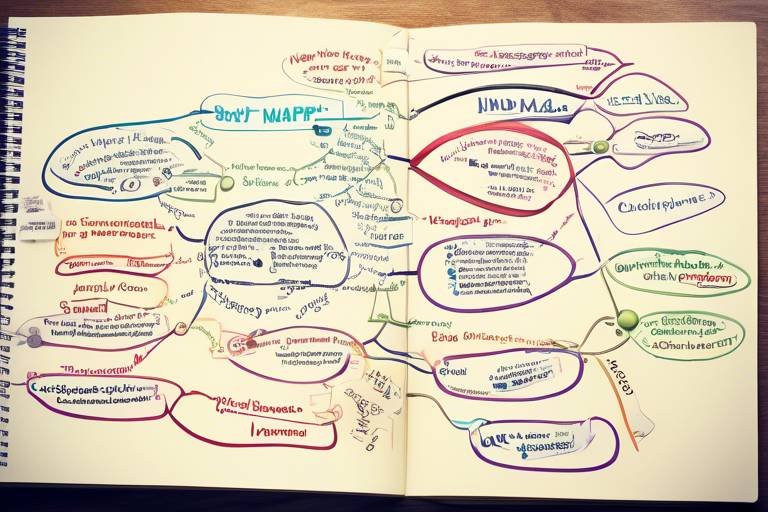How to Create a Healthy Work Environment
Creating a healthy work environment is crucial for the overall well-being and productivity of employees. By implementing certain strategies and fostering a positive atmosphere, organizations can ensure that their workforce thrives both professionally and personally.
One key aspect of promoting a healthy work environment is to open communication channels within the organization. Encouraging transparent and honest communication among team members and management helps build trust and resolve conflicts effectively. When employees feel heard and valued, they are more likely to be engaged and motivated in their work.
Emphasizing work-life balance is another essential factor in creating a healthy workplace. It is important to promote a culture that values personal time and encourages employees to prioritize self-care and family commitments. By supporting a healthy balance between work and personal life, organizations can prevent burnout and improve overall job satisfaction.
Providing opportunities for growth is also crucial in fostering a healthy work environment. Offering training programs, career development opportunities, and mentorship initiatives can help employees advance their skills and knowledge, leading to increased job satisfaction and engagement.
Encouraging physical wellness is another important aspect of creating a healthy workplace. Organizations can promote physical activity, provide healthy eating options, and offer wellness programs to support employees' overall health and vitality. A healthy workforce is a productive workforce.
Recognizing and rewarding achievements is key to boosting morale and motivation in the workplace. By acknowledging employees' hard work and accomplishments, organizations can create a positive and supportive work environment where individuals feel valued and appreciated.
Establishing clear goals and expectations is essential for providing employees with a sense of purpose and direction in their roles. Setting SMART goals and defining clear expectations can help employees understand their responsibilities and work towards common objectives.
Promoting a positive company culture is vital for creating a healthy work environment. By fostering a supportive and inclusive culture where diversity is celebrated, and teamwork is encouraged, organizations can build a strong sense of community and belonging among employees.
Implementing flexibility in work arrangements is another effective way to promote a healthy work environment. Allowing for remote work options, flexible hours, and accommodating individual needs can help employees achieve a better work-life balance, reduce stress, and increase job satisfaction.

Open Communication Channels
Tips and strategies for fostering a positive and productive work atmosphere that promotes employee well-being and satisfaction.
Encouraging transparent and honest communication among team members and management is essential for building trust and resolving issues effectively. When communication channels are open, employees feel heard and valued, leading to a more cohesive and collaborative work environment. By promoting open communication, misunderstandings can be minimized, and conflicts can be addressed promptly, fostering a culture of respect and understanding.

Emphasize Work-Life Balance
Tips and strategies for fostering a positive and productive work atmosphere that promotes employee well-being and satisfaction.
In today's fast-paced work environment, emphasizing work-life balance is crucial for the well-being of employees. Imagine work and life as a seesaw; if one side is constantly weighed down, the balance is lost, leading to stress and burnout. By promoting a culture that values personal time and encourages employees to prioritize self-care and family commitments, organizations can create a harmonious equilibrium. This approach not only benefits employees' mental and physical health but also enhances their productivity and job satisfaction.

Provide Opportunities for Growth
One of the key elements in creating a healthy work environment is to for your employees. When individuals have the chance to develop their skills and advance in their careers, they are more likely to feel motivated and engaged in their work. By offering training programs, career development opportunities, and mentorship programs, you can support your employees in reaching their full potential. These initiatives not only benefit the individual but also contribute to the overall success of the organization.
Imagine a workplace where employees are encouraged to continuously learn and grow, where their professional development is valued and supported. This not only boosts employee morale but also enhances the skills and knowledge base within the company. Employees who feel that they have opportunities for growth are more likely to stay committed to their roles and contribute positively to the organization's goals.
Furthermore, by investing in your employees' growth, you are building a strong foundation for the future of your company. As individuals develop new skills and take on more responsibility, they become valuable assets that can drive innovation and success. Providing opportunities for growth is not just about individual development; it is also about strengthening the collective capabilities of your team.
In summary, fostering a culture of growth and development within your organization is essential for creating a dynamic and thriving work environment. By offering opportunities for employees to expand their skills, advance in their careers, and reach their full potential, you are not only investing in the success of your team but also nurturing a culture of continuous improvement that benefits everyone involved.

Encourage Physical Wellness
Tips and strategies for fostering a positive and productive work atmosphere that promotes employee well-being and satisfaction.
Physical wellness is a crucial aspect of overall well-being that directly impacts employees' performance and satisfaction. By encouraging physical wellness in the workplace, employers can create a supportive environment that promotes healthy habits and boosts energy levels.
One effective way to encourage physical wellness is by providing access to wellness programs that promote physical activity. This can include organizing group fitness classes, setting up walking meetings, or offering gym memberships to employees. By incorporating physical activity into the workday, employees can stay active and improve their overall health.
In addition to promoting physical activity, offering healthy eating options can also contribute to employees' physical wellness. Providing nutritious snacks, organizing healthy eating challenges, or offering nutrition workshops can help employees make healthier food choices and improve their overall well-being.
Creating a wellness corner or designated space for relaxation and meditation can also support employees in managing stress and improving their physical wellness. This space can be equipped with comfortable seating, calming décor, and resources for relaxation techniques, allowing employees to take short breaks and recharge during the workday.
Furthermore, implementing ergonomic workstations and promoting proper posture can help prevent physical discomfort and reduce the risk of injuries. Providing ergonomic chairs, adjustable desks, and encouraging regular breaks can support employees in maintaining good physical health while working.
Overall, by prioritizing physical wellness in the workplace, employers can create a positive and supportive environment that enhances employees' overall health, energy levels, and productivity.
1. How can employers promote physical wellness in the workplace?
Employers can promote physical wellness by providing access to wellness programs, offering healthy eating options, creating spaces for relaxation, and implementing ergonomic workstations.
2. Why is physical wellness important in the workplace?
Physical wellness is important in the workplace as it improves employees' overall health, boosts energy levels, reduces stress, and enhances productivity.
3. What are some simple ways employees can incorporate physical activity into their workday?
Employees can incorporate physical activity into their workday by taking short walks during breaks, using stairs instead of elevators, or participating in office fitness challenges.

Recognize and Reward Achievements
Tips and strategies for fostering a positive and productive work atmosphere that promotes employee well-being and satisfaction.
Recognizing and rewarding employees' achievements is a crucial aspect of maintaining a healthy work environment. By acknowledging their hard work and accomplishments, you not only boost morale but also motivate them to continue performing at their best.
One effective way to recognize achievements is through regular feedback sessions. Providing constructive feedback and highlighting specific accomplishments can make employees feel valued and appreciated. Additionally, public recognition, such as employee of the month awards or shoutouts during team meetings, can go a long way in boosting motivation.
Rewards play a significant role in reinforcing positive behavior and performance. These rewards can range from monetary incentives and bonuses to non-monetary perks like extra time off, gift cards, or even personalized tokens of appreciation. Tailoring rewards to individual preferences can make the recognition more meaningful and impactful.
Moreover, celebrating milestones and achievements as a team fosters a sense of camaraderie and unity. Organizing team events, parties, or outings to commemorate successes can strengthen bonds among team members and create a positive work culture centered around shared accomplishments.
Ultimately, recognizing and rewarding achievements not only boosts employee morale and motivation but also reinforces a culture of appreciation and excellence within the organization.
Q: How can I effectively communicate the importance of recognizing and rewarding achievements to my team?
A: To effectively communicate the significance of recognition and rewards, lead by example. Highlight the positive outcomes of such practices and demonstrate how they contribute to a supportive and motivating work environment.
Q: What are some creative ways to reward employees for their achievements?
A: Get creative with rewards by offering personalized experiences, such as a spa day, cooking class, or tickets to a show. Additionally, consider implementing peer-to-peer recognition programs where employees can nominate their colleagues for outstanding efforts.
Q: How can I ensure that recognition and rewards are fair and equitable for all employees?
A: Establish clear criteria for recognition and rewards to ensure transparency and fairness. Consider implementing a structured rewards system based on performance metrics and aligning rewards with the values and goals of the organization.

Establish Clear Goals and Expectations
Creating a healthy work environment is crucial for fostering a positive and productive atmosphere that promotes employee well-being and satisfaction. One of the key aspects to achieve this is by establishing clear goals and expectations for your team members.
When employees are aware of what is expected of them and have a clear understanding of the goals they need to achieve, it provides them with a sense of purpose and direction in their roles. Setting SMART goals - specific, measurable, achievable, relevant, and time-bound - can help employees stay focused and motivated towards achieving success.
Communication plays a vital role in ensuring that these goals and expectations are effectively conveyed to the team. By regularly communicating with your employees, you can clarify any doubts, provide feedback, and ensure everyone is on the same page regarding their responsibilities and targets.
Moreover, establishing clear goals and expectations creates a roadmap for success within your organization. It helps in defining the path that employees need to follow, leading to improved performance, increased efficiency, and a more cohesive team dynamic.
Additionally, when employees understand what is expected of them, they are more likely to feel empowered and confident in their roles. This clarity can reduce confusion, prevent misunderstandings, and enhance overall job satisfaction and engagement among team members.
By emphasizing the importance of setting clear goals and expectations, you can create a work environment where everyone is aligned towards a common vision, working collaboratively towards shared objectives, and contributing to the overall success of the organization.

Promote a Positive Company Culture
Creating a positive company culture is essential for fostering a thriving work environment where employees feel valued and motivated. A positive company culture goes beyond superficial perks; it involves creating a supportive and inclusive atmosphere where diversity is celebrated, and teamwork is encouraged. When employees feel connected to their colleagues and the organization as a whole, they are more likely to be engaged and committed to their work.
One way to promote a positive company culture is by prioritizing open communication channels. Encouraging team members to share their ideas, concerns, and feedback openly can help build trust and strengthen relationships within the organization. When employees feel heard and valued, they are more likely to feel a sense of belonging and loyalty to the company.
Another important aspect of promoting a positive company culture is recognizing and appreciating the contributions of employees. By acknowledging their hard work and achievements, you not only boost morale but also create a sense of camaraderie and mutual respect among team members. This can lead to increased collaboration and a more harmonious work environment.
Moreover, promoting a positive company culture involves fostering a sense of community and belonging. Organizing team-building activities, social events, and volunteer opportunities can help employees connect on a personal level and build strong relationships outside of work tasks. When employees feel connected to their colleagues and the company's values, they are more likely to be motivated and engaged in their work.
Overall, promoting a positive company culture requires a proactive approach that values transparency, recognition, community, and inclusivity. By prioritizing these aspects, organizations can create a work environment where employees feel motivated, supported, and empowered to reach their full potential.

Implement Flexibility in Work Arrangements
Tips and strategies for fostering a positive and productive work atmosphere that promotes employee well-being and satisfaction.
Flexibility in work arrangements has become increasingly important in today's dynamic work environment. By allowing employees to have more control over how and when they work, companies can enhance productivity and job satisfaction. Offering remote work options, flexible hours, and accommodating individual needs can lead to a more motivated and engaged workforce. This flexibility not only promotes a better work-life balance but also helps reduce stress levels among employees.
Frequently Asked Questions
- What are the benefits of open communication channels in a work environment?
Open communication channels foster trust, transparency, and collaboration among team members and management. They enable effective conflict resolution, idea sharing, and feedback exchange, leading to a more positive and productive work atmosphere.
- How does emphasizing work-life balance contribute to employee well-being?
Emphasizing work-life balance shows employees that their personal time and well-being are valued. It helps prevent burnout, reduces stress levels, and improves overall job satisfaction, leading to higher productivity and retention rates.
- Why is it important to provide opportunities for growth in the workplace?
Providing opportunities for growth through training, mentorship, and career development programs motivates employees to enhance their skills and knowledge. It boosts morale, engagement, and loyalty, ultimately benefiting both the individual and the organization.
- How can recognizing and rewarding achievements impact the work environment?
Recognizing and rewarding achievements boosts employee morale, motivation, and job satisfaction. It creates a positive reinforcement loop, encouraging continued excellence and fostering a culture of appreciation and recognition within the workplace.
- What role does promoting a positive company culture play in employee engagement?
Promoting a positive company culture creates a sense of belonging, purpose, and unity among employees. It enhances teamwork, collaboration, and creativity, leading to increased engagement, retention, and overall organizational success.



















